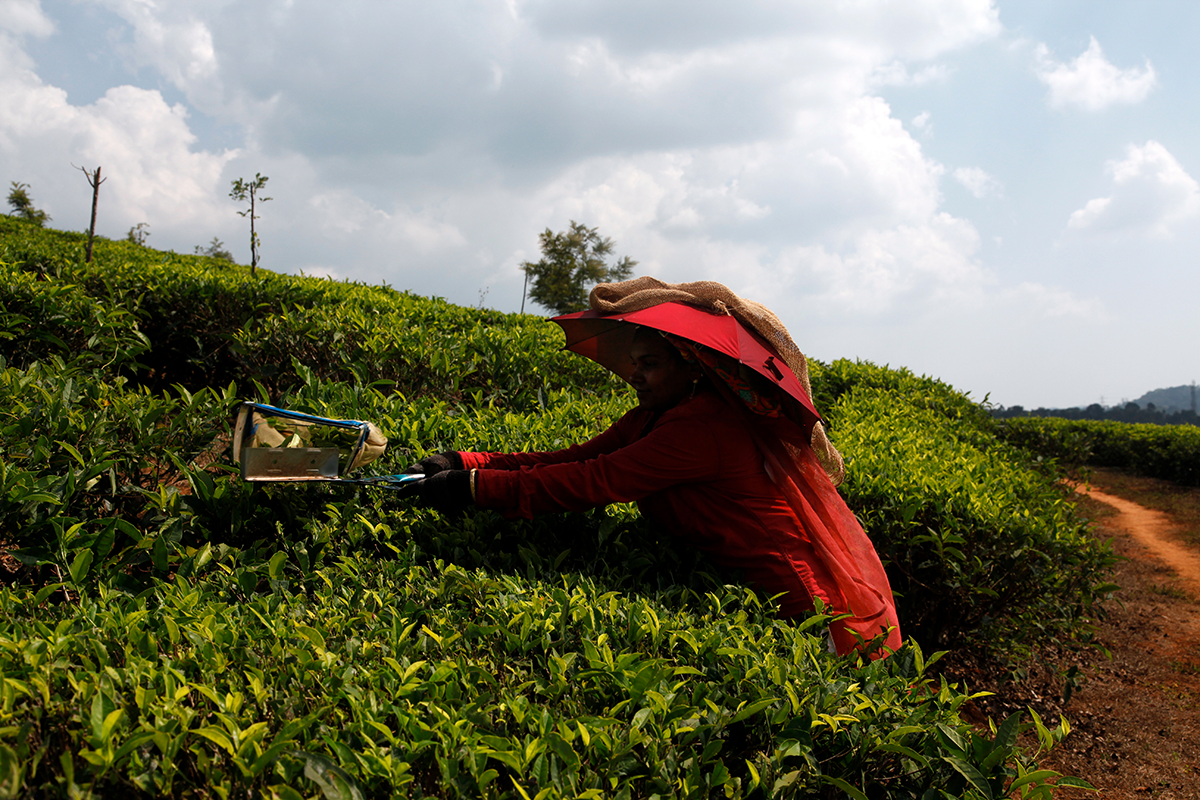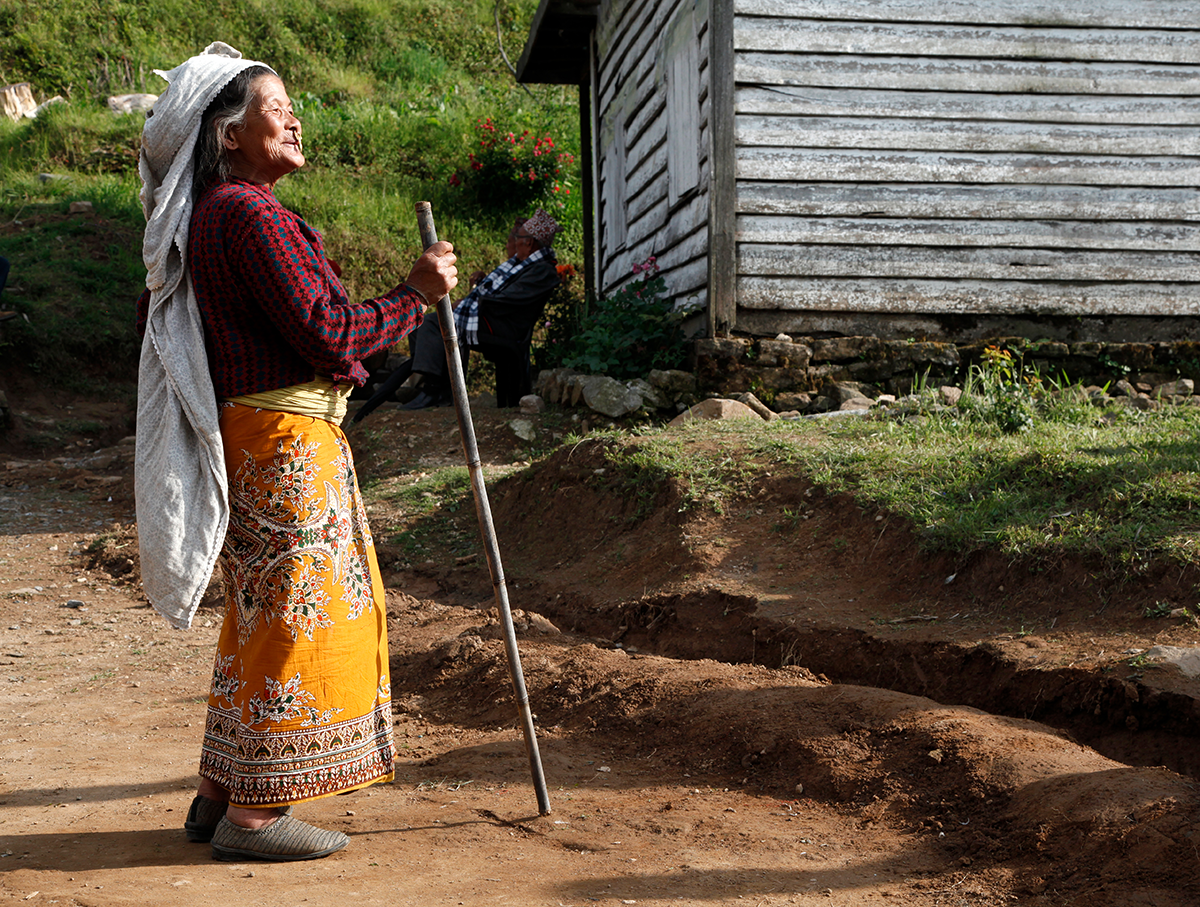The tea-producing regions of Southern India are mainly located in Tamil Nadu (around Ooty and Coonoor) and Kerala (Munnar and Wayanad). Although the teas from these areas are not known as the best in the country, if you seek out good teas you can find plantations producing some really interesting ones. Like here, in the Wayanad region, with the Western Ghats in the background, and Chembra Peak.
ARCHIVE FOR February 2019
Tea is not always harvested by hand
Harvesting tea using shears poses a problem in terms of quality, as the stems get cut too, instead of just the shoot and the two next leaves. For a high-quality tea, nothing surpasses picking by hand. When, during my travels, I see someone using shears, I talk to the planter to find out why this is. Often, it’s due to a lack of workers. Another common situation is that the tea is picked by hand in the best season, and then shears are used for the lesser-quality harvests, and these leaves will be used for tea bags.
The tea trading centre of Kochi
The city of Kochi (India) is one of the old trading centres that developed thanks to tea. In the case of the capital of the state of Kerala, it was also thanks to spices, coffee and jute. These goods were all packed into the holds of ships that set sail for Arabia. Today, many Indian tea companies maintain a presence in this city, particularly on Willingdon Island. And if you wander along the streets that link the charming district of Fort Kochi to the area of Mattancherry, you will spot the wholesalers’ warehouses, selling whole sacks of tea and coffee, but also cardamom, ginger, pepper, nutmeg and more. It’s an aromatic experience that takes you back in time, surrounded by houses in the Portuguese and Dutch colonial style. The shadow of Vasco da Gama looms everywhere in the old town. Not far from there, tourists enjoy watching the Chinese fishermen rigging up their nets, and weighing them down with heavy stones.
Tea researcher, a process of investigation
Before starting to work with tea, I dreamed of being a journalist. I liked the idea of finding out about people, asking them questions, understanding what they do, getting them to explain things that are sometimes complicated, and trying to make them comprehensible. I liked the idea of being an investigator, of gathering information, of putting my interviewee at ease and having an interesting conversation. I wanted to do a job that took me all over the world and let me meet people from all backgrounds and cultures, men and women who speak a different language, who have a different history from mine. I wanted to receive their message and transmit it. In the end, I created this role of tea researcher, which didn’t exist before. I could have stayed behind my counter in my tea shop, which I enjoyed, talking to customers, listening to them, helping them. But I wanted to do more, to investigate, to find out where the tea leaves come from. First I learned to taste, to recognise flavours and aromas; then I learned other languages. I was thirsty for knowledge, I wanted to discover an unexplored world, that of tea. So I packed my bags and I went to meet farmers, growers, traders, pickers and planters. I entered that world a little more with every trip. I took my time. I set out to meet the people who live in the mountains where tea is grown. I found them in the fields, in the village square, in front of the factory. I sat down with them, I rested. I listened, then listened some more. I recorded everything. And that is how, 32 years later, everything I found so rewarding and enjoyable in the job of a journalist, I find now, in my work as a tea researcher.


